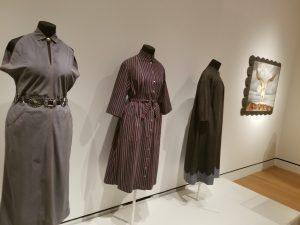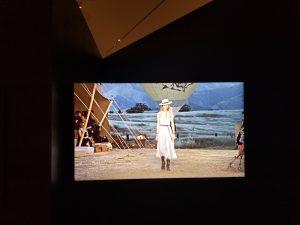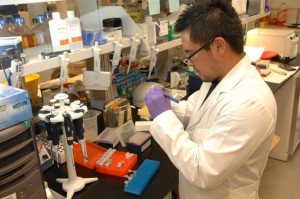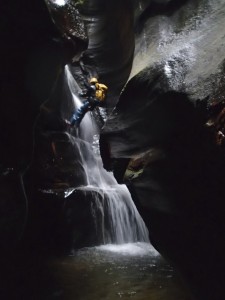For entrepreneurs seeking venture capital funding, there’s good news—and there’s bad news. The good news is that it’s easier now than at any time in the last ten years to get relatively small amounts of seed money. The bad news is that it’s harder to obtain “A Round” or additional series funding after that.
That was the consensus of three Boston area venture capitalists who spoke at the Cambridge Innovation Center on Wednesday, May 2. Moderator Ben Hron of law firm McCarter -English, which sponsored the event, asked the VCs how the 2008 economic downturn has impacted the VC industry; where things stand now, and what they foresee for the future.
Impact of the recession
A changing industry
Jo Tango, founder and partner of Kepha Partners, which invests in early stage companies, said that for many VC firms, this is a period of innovation. “We call it VC 2.0,” he quipped to the audience of entrepreneurs. The VC industry, which started in about 1980, used to be dominated by approximately 20 major firms; today, there are more smaller, more specialized VC firms, he said.
David Beisel, co-founder and partner of NextView Ventures, a dedicated seed-stage venture capital firm focused on Internet startups, said that the downturn has “facilitated a maturation process,” which he likened to what happened in the beer industry in the 1990s.
That is, “You had to be either one of the biggest, like Anheuser-Busch—or a microbrewery.” Mid-size companies like Genesee fell by the wayside.
Likewise, today, he said, “VC firms are no longer trying to be all things to all entrepreneurs; they’re taking a dedicated approach. Recently, four or five firms raised more than $1B but mid-sized firms are struggling.”
CA Webb, Executive Director of the New England Venture Capital Association, said that considering this a time of “introspection and innovation” is “optimistic…The reality is that the industry is taking a hard look at itself. Some say that the ‘sky is falling,’ because there’s less money being invested; this means that some firms will shut down. Those that succeed will need to articulate clearly just what they are willing to offer and to whom.”
Tango pointed out that “Innovation [in the VC industry] creates a challenge for entrepreneurs because VC firms are “all over the map,” and “it’s difficult to know which one is right for [a particular startup]. It’s easier now to get seed money–but terms are often more difficult to distinguish.”
Current trends
In asking the panelists for their views on the current venture funding situation, Hron shared Q1 2012 statistics showing a large number of deals but a drop in total funding compared with previous quarters– in indicating fewer “megadeals.” “Should entrepreneurs should be optimistic because of the number of deals or pessimistic about the size of the deals?” he asked.
Fewer large deals
Tango responded that one reason for the decline in large deals has to do with the number of deals VCs have previously closed. In the current economic climate, he explained, it’s difficult raise a stream of money. In a recent study of five VC Web sites, his firm found that many VCs are already sitting on the boards of 10-17 companies in which they have invested. “If you’re fundraising…if you’re already on 15 boards, you need to spend your time fund raising,” not sitting on additional boards.
Smaller investments
Beisel described what he called a longer term trend: in some sectors, especially digital media, companies don’t need to raise as much money for initial funding as in other sectors–so at earlier stages, the venture community is reacting by not writing $5M checks but rather $1M or .5 M.
In Webb’s view, “seeding is now like the old Series A funding: there is a lot of seed money to go around but Series A is now looking like the old series C “(IE–difficult to come by).
Follow-on funding can be problematic.
Tango agreed –describing a firm that backed 20 companies with seed money but told him it will provide only 2 % of those with Series A funding. He added that the situation is even more complicated because even at the “seed stage,”different VCs require different terms.
In fact, he recommended, “Ninety per cent of startups should be bootstrapped (funded by self, friends and family) because other investors expect that they will get their money out within a few years. “With VC funding, you’re becoming a fiduciary…taking on ‘credit card debt’ that you will need to pay back.”
In Beisel’s view, before taking any money from VCs, an entrepreneur needs to know how outsiders view the firm, the reputation of the VC firm, which partner will be best for the company, and whether the firm usually adds to series funding or “will you be one of the 98% that get dropped?”
Health care vs. other investment
Citing a decline in financing for health care ventures in Massachusetts compared with increased financing for Internet and mobile technology, Hron asked if investors are seeking short-term gains as instead of taking the long view required for biotechnology and pharma payback.
Webb responded that one reason for the slowdown in health care company funding is that the US Food and Drug Administration is taking longer to approve products so the horizons for investors are longer. As a result, investors are shifting toward healthcare technology, “big data” and products that will bring a quicker return.
In Beisel’s view, “Over the last ten years the returns for health care investment have not been that great; health care is now even more challenging. But VCs won’t shift to other spaces; the money just won’t get raised.”
Long -term trends
According to Hron, the data suggest a rise in VC investing in Washington State, Texas, and Illinois. “Are we seeing the rise of a national VC community or is this a blip?” he asked. “And will VC investors look at companies nationwide?”
Tango and Beisel agreed that large investors are looking at companies nationally and internationally–especially in the Internet space.
They also agreed that it’s unlikely that VCs will spring up in Kansas or in “third-tier American cities,” as Beisel; put it. In Tango’s view, “they will still be centered in Boston, NY and California.” Beisel pointed out that that VC firms are on the rise in nations like Argentina and Eastern Europe. According to Webb, “Capital clusters around academic institutions: You won’t see much density elsewhere.”
Crowd sourcing
Regarding the recent passage of legislation allowing corporate fundraising through crowd sourcing, panelists expressed concerns about possibilities for fraud and entry of organized crime; and also that unsophisticated investors might not know that seasoned professionals expect to lose money on most investments—in hopes that a few will have big payoffs.
Asked by Hron if VCs will look askance at companies raising initial funding through crowd sourcing, Beisel said that it’s fine to get seed money wherever you can but a “real company” will need institutional investors in order to grow large.
In Tango’s view, “Your source of funding depends on what you want to accomplish: Do you just want to get money…or are you looking for series of VC rounds, advice and support?”
PANELIST BIOs
David Beisel – David is Co-Founder and Partner of NextView Ventures, a dedicated seed-stage venture capital firm focused on investments in internet startups. Previously he was an investor at both Venrock and Masthead Venture Partners, where he served on the boards of BlogHer and Gazelle. Prior to joining Masthead, he co-founded Sombasa Media, an e-mail marketing company which was successfully acquired by About.com and subsequently became a division of Primedia (NYSE: PRM), where he served as Vice President of Marketing. He is also the founder of the Web Innovators Group, a quarterly entrepreneur-focused event which attracts nearly a thousand attendees. David blogs atwww.GenuineVC.com.
Jo Tango – Jo is Founder and Partner of Kepha Partners, an early-stage venture capital firm. Previously, Jo spent was a General Partner at Highland Capital Partners, where he worked for nearly nine year, and before that he spent five years with Bain & Company. Jo has invested in the e-commerce, search engine, Internet ad network, wireless, supply chain software, storage, database, security, on-line payments and data center virtualization spaces. He has been a founding or first institutional investor in Azuki Systems, Bit9, ExaGrid, StreamBase Systems, Vertica Systems (acquired by Hewlett-Packard), Virtual Iron (acquired by Oracle) and VoltDB, getting involved nearly always at the company inception phase. Other investments include Ask Jeeves (Nasdaq: ASKJ), Digital Market (acquired by Agile Software), and NextCard (Nasdaq: NXCD).
C.A. Webb – C.A. became the Executive Director of the New England Venture Capital Association in January 2012. Members of the NEVCA include more than 700 venture capital professionals from over 100 firms that collectively manage more than $50 billion in capital. C.A. has spent her career in entrepreneurial roles with mission driven, early stage and high growth organizations. Her work has focused on breakthrough business models in a diverse array of industries including retail and packaged goods (Whole Foods Market), consumer internet technology (Care.com), sustainability (Preserve Products), historic preservation (Trinity Boston Foundation), public education (Boston Collegiate Charter School), and publishing (Fast Company magazine
 Still thinking about the fabulous Georgia O’Keeffe show I saw last Sunday at the Peabody Essex Museum, in Salem, MA. “Georgia O’Keeffe: Art, Image, Style,” is a retrospective going back to O’Keeffe’s high school years. It continues through her experiences in Chicago, Texas, New York City, Lake George, New Mexico and beyond her lifetime, to the present day.
Still thinking about the fabulous Georgia O’Keeffe show I saw last Sunday at the Peabody Essex Museum, in Salem, MA. “Georgia O’Keeffe: Art, Image, Style,” is a retrospective going back to O’Keeffe’s high school years. It continues through her experiences in Chicago, Texas, New York City, Lake George, New Mexico and beyond her lifetime, to the present day. Central to the show is the distinctive clothing she designed and wore–presented in relation to her paintings.
Central to the show is the distinctive clothing she designed and wore–presented in relation to her paintings. But an example of the early commercial artwork (left), on which she embarked to supplement her Texas teaching salary, makes me certain she would have become renowned on her own.
But an example of the early commercial artwork (left), on which she embarked to supplement her Texas teaching salary, makes me certain she would have become renowned on her own.












